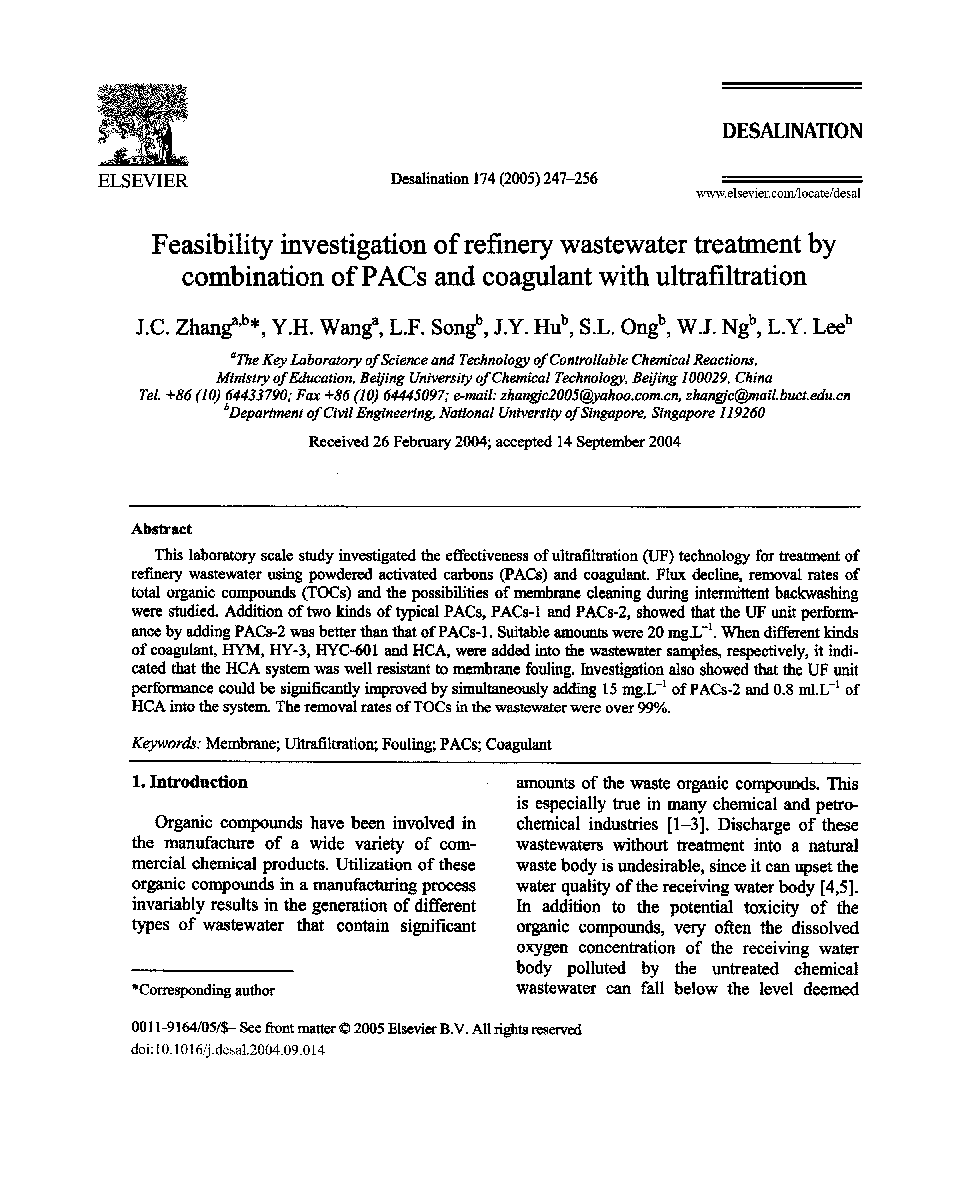| Article ID | Journal | Published Year | Pages | File Type |
|---|---|---|---|---|
| 10386370 | Desalination | 2005 | 10 Pages |
Abstract
This laboratory scale study investigated the effectiveness of ultrafiltration (UF) technology for treatment of refinery wastewater using powdered activated carbons (PACs) and coagulant. Flux decline, removal rates of total organic compounds (TOCs) and the possibilities of membrane cleaning during intermittent backwashing were studied. Addition of two kinds of typical PACs, PACs-1 and PACs-2, showed that the UF unit performance by adding PACs-2 was better than that of PACs-1. Suitable amounts were 20 mg.Lâ1. When different kinds of coagulant, HYM, HY-3, HYC-601 and HCA, were added into the wastewater samples, respectively, it indicated that the HCA system was well resistant to membrane fouling. Investigation also showed that the UF unit performance could be significantly improved by simultaneously adding 15 mg.Lâ1 of PACs-2 and 0.8 ml.Lâ1 of HCA into the system. The removal rates of TOCs in the wastewater were over 99%.
Related Topics
Physical Sciences and Engineering
Chemical Engineering
Filtration and Separation
Authors
J.C. Zhang, Y.H. Wang, L.F. Song, J.Y. Hu, S.L. Ong, W.J. Ng, L.Y. Lee,
